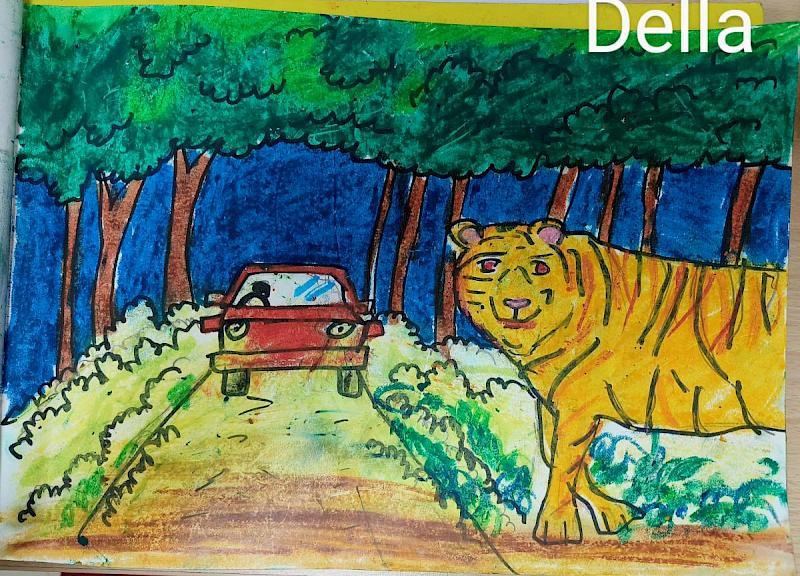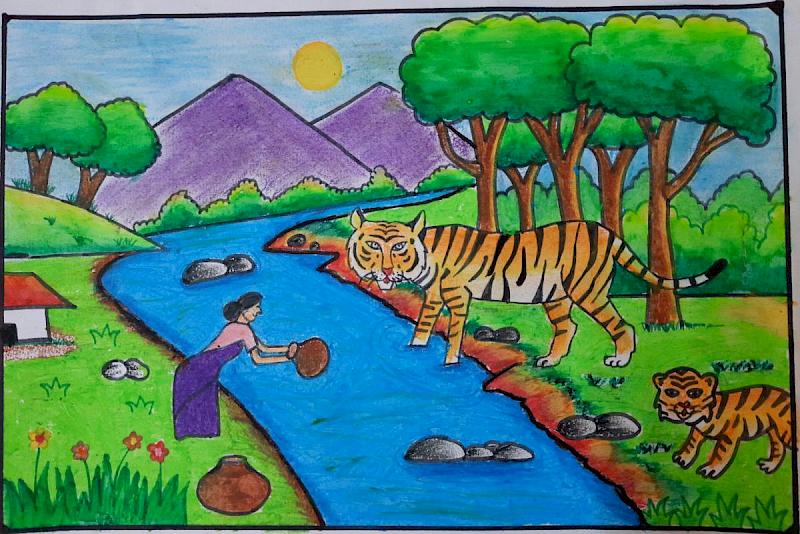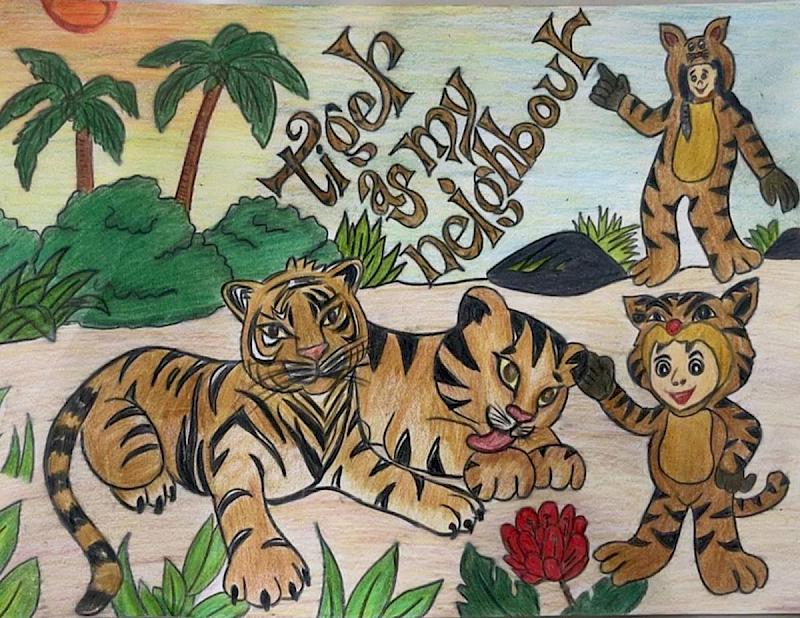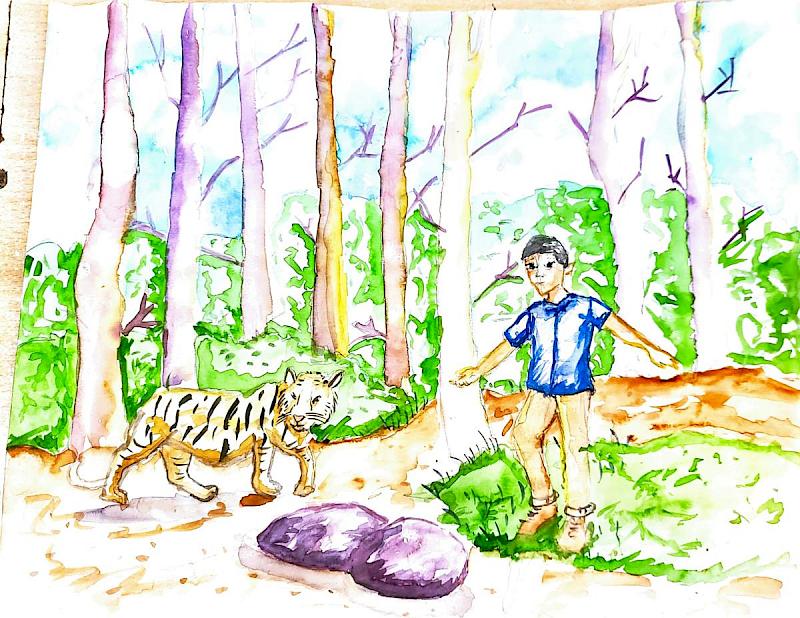
Abbie Pearce
TRAFFIC Media Support Manager
Since I was a child, tigers have been almost mythical creatures found in books and documentaries, only brought to life when I’ve seen them in zoos around Europe. However, that hasn’t dampened my passion to ensure that their wild relatives can continue to thrive in their natural habitat.
 Working for TRAFFIC and collaborating with partners, I feel fortunate to be in a position to help tackle illegal wildlife trade, forge a future for healthy habitats, and the resurgence of nature via the UN’s Biodiversity Plan.
Working for TRAFFIC and collaborating with partners, I feel fortunate to be in a position to help tackle illegal wildlife trade, forge a future for healthy habitats, and the resurgence of nature via the UN’s Biodiversity Plan.
 That is why I was honoured to represent TRAFFIC as part of the Tiger Conservation Coalition’s Communication Sub-Committee for the Sustainable Finance for Tiger Landscapes Conference.
That is why I was honoured to represent TRAFFIC as part of the Tiger Conservation Coalition’s Communication Sub-Committee for the Sustainable Finance for Tiger Landscapes Conference.
Even more humbling, I was invited to be one of five judges for the Youth Art Competition on behalf of TRAFFIC and the other Tiger Conservation Coalition members.
In the words of His Excellency the Prime Minister of Bhutan, Dasho Tshering Tobgay, at the Sustainable Finance for Tiger Landscapes Conference...
Tigers represent the health of our forests and resilience of entire ecosystems. More importantly, tigers represent our collective well-being and our future.”

Engaging Youth for the future of tigers
Engaging with today's young people is extremely important to promote future conservation, as well as sustainable business and finance. Without understanding the critical need for nature, the generation of tomorrow could continue to lose the most important asset to human life – healthy and thriving global biodiversity.
That is why the Tiger Conservation Coalition encouraged schools and children in tiger range states to dig deeper and expand their understanding through the Tiger Youth Art Competition.
The Coalition asked participants aged 5-8 and 9-12 to encapsulate their newly developed or existing perceptions of the themes:
‘Tigers as my neighbours’ and ‘Living with Tigers’
For those living in the tiger range states, one would think they are more likely to see tigers in the wild. But, with approximately only 4500 left in the wild, even conservationists on the ground may never actually witness a roaming adult tiger with their own eyes. So, I was impressed to see the detail and passion for the species through their entries despite probably never seeing one in the wild.
The winners were revealed at the Sustainable Finance for Tiger Landscapes Conference in Bhutan, April 2024.
1st Place
Vasudha from India, 5-8 Years Amanjeet from India, 9-12 Years
Tigers face many challenges, and these are demonstrated in the artwork. Personally, I was very impressed by the winner in the 5-8 year old category's take on capturing the threats that tigers face. From habitat loss due to deforestation to trade in tiger products, Vasudha encapsulates this in a split globe, with the message “everyone deserves to live in this planet Earth.”
Amanjeet’s piece in the 9-12 year old category caught my attention, not only for their artistic skills but also for showing the unity of tigers with their natural habitats and local communities. For me, this depicted the harmony with nature that the globe should aim for, highlighting the knowledge of local communities we should be learning from and how to find this balance through international collaboration such as the UN’s Biodiversity Plan.
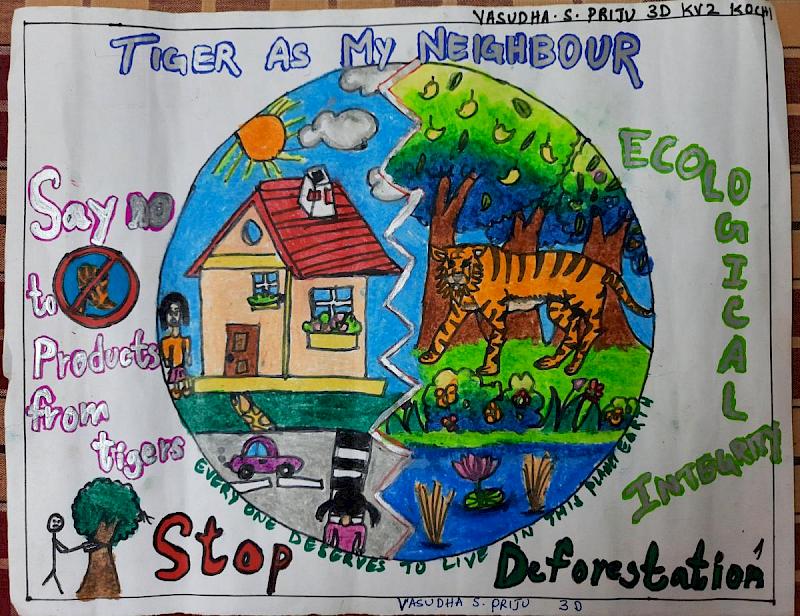
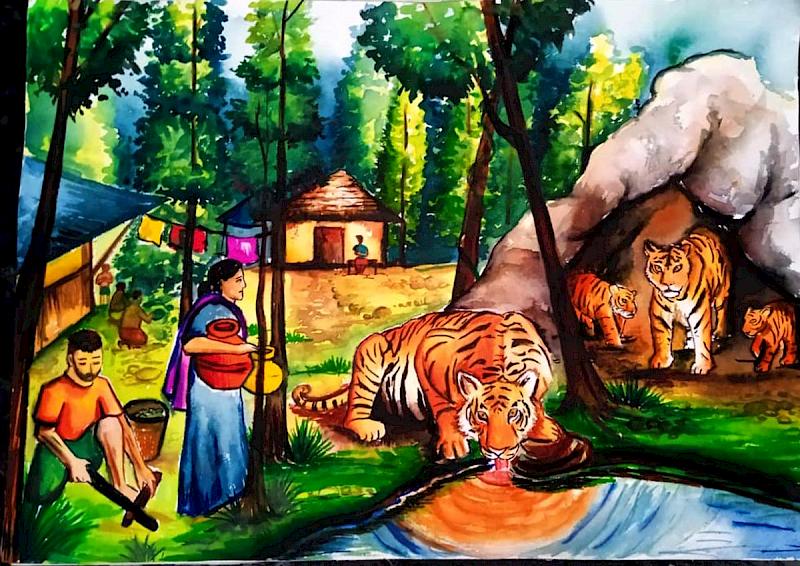
Other young artists spotlighted threats such as building roads through tiger habitats and hunting for trade.
Below is only a selection of all the entries.
 |  |  |
 |  | 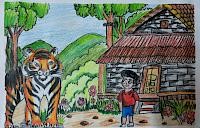 |
 |  |  |

Engaging on a global scale for the future of tigers
Needing large areas with diverse habitats, tigers are known as a ‘landscape species’. As the world’s largest big cat and an apex (top) predator, tigers play a significant role in the structure and function of the ecosystem on which humans and wildlife rely.
Tigers also have far-reaching impacts on the global Sustainable Development Goals via climate change mitigation, livelihoods, and human health. However, as conveyed in a TRAFFIC report, demand and poaching of tigers for trade in their body parts continue to be a major threat to their survival.
Efforts to protect tigers' vital role and habitats require collaboration and commitment from governments, conservation organisations, local communities, and individuals worldwide.
By prioritising the conservation of tigers, we are not only safeguarding a magnificent species but also taking a stand for our planet's health and future generation’s well-being.
Hear more about the challenges tigers face, the integrated approach needed and the reasons why people should invest in tigers by listening to the lively panel discussion on
Linking tiger landscape conservation to global agendas on biodiversity and climate
The session was moderated by Richard Scobey, TRAFFIC’s Executive Director and included:
- Kirsten Schuijt, Director General of WWF-International,
- Lobzang Dorji, for the Ministry of Energy and Natural Resources (Bhutan)
- Hannah Fairbank, Asia Regional Coordinator and Senior Biodiversity Specialist for Global Environment Facility,
- Ana Nieto, Head of Species Conservation Action at IUCN,
- Haruko Okusu, Senior Programme Officer / Chief, Outreach and Projects Unit Senior Programme Officer / Chief, Outreach and Projects Unit at CITES.

Engaging funding for the future of tigers
In partnership with the Tiger Conservation Coalition, the Sustainable Finance for Tiger Landscapes Conference culminated with the Paro Statement for Tigers by the Royal Government of Bhutan.
This vital commitment urges all tiger range countries, non-range governments, public and private sector, financial institutions, civil society organisations, and individuals to rally USD 1 billion in additional funding for tiger conservation by 2034, the next Year of the Tiger.
As well as increasing the global tiger population, these funds will contribute to expanding the tiger range, enhancing the ecological integrity and overall biodiversity of those areas while at the same time benefiting the local communities that share space with this species.

Get engaged for the future of tigers
By working together, we can create a future where tigers roam freely in their natural habitats, contributing to the balance and resilience of ecosystems.
For those who, attended the Sustainable Finance for Tiger Landscapes Conference, participated in the art competition and others worldwide, let us unite and invest in protecting tigers and ensuring a future where these iconic creatures continue to inspire awe and contribute to biodiverse, nature-positive landscapes.
I do not want the children of tomorrow to only experience tigers in books or documentaries about extinct species."
Abbie Pearce, TRAFFIC Media Support Manager

About the Tiger Conservation Coalition

The Tiger Conservation Coalition brings together leading biologists and experts in wildlife crime, human-wildlife coexistence, policy, finance, development and communications, with unprecedented alignment on achieving tiger conservation at scale. Its member organisations include the International Union for Conservation of Nature (IUCN), the Environmental Investigation Agency; Fauna & Flora; Panthera; TRAFFIC; the United Nations Development Programme (UNDP); the Wildlife Conservation Society; Worldwide Fund for Nature (WWF) and the Zoological Society of London (ZSL). For more information, contact


